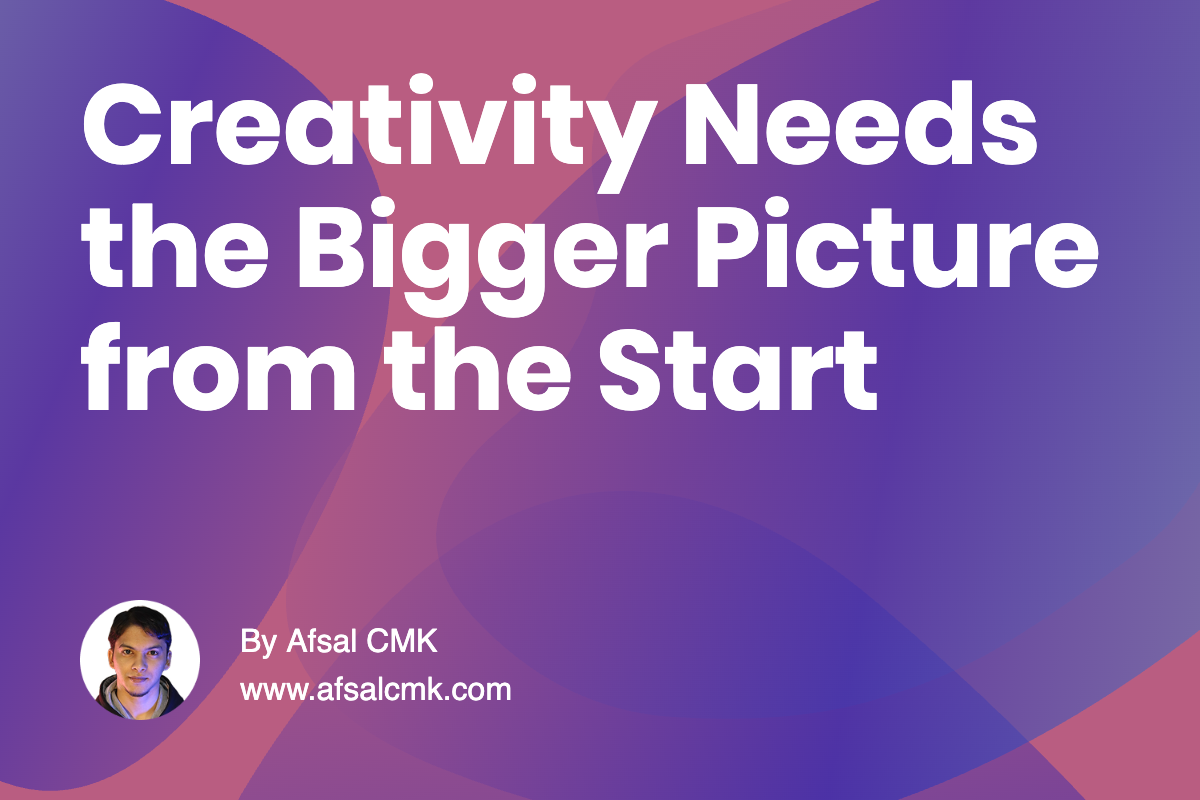
Creativity Needs the Bigger Picture from the Start
I've seen this happen often - creativity gets invited at the last minute. The team builds the structure, defines the flow, finalizes the logic, and then someone says, “Now let’s make it look creative.” But by that point, it’s usually too late. Because in product design, creativity isn’t a layer you sprinkle on top - it’s part of the foundation.
When creativity comes late, it’s often reduced to visual polish: colors, typography, and icons. But real creativity in design goes much deeper. It shapes how the product feels, how the layout breathes, how interactions flow, and how users emotionally connect with the experience. When you think creatively from the start, it influences everything from structure to behavior - and even the story the product tells.
Every decision in design is connected. A small visual change can shift balance, composition, or hierarchy. Moving a button might affect interaction timing, user focus, or accessibility. Reworking spacing or typography can alter how users perceive importance and readability. So when creativity enters late, it often ends up fighting against established structures - resulting in tension, compromise, and inconsistency.
That’s why the bigger picture matters. Planning creatively from the beginning means involving design thinking during the earliest discussions - not after decisions are already locked. It’s about understanding business goals, user needs, and technical boundaries, and then exploring how creativity can elevate all three together. This kind of foresight creates alignment and flexibility instead of rework and frustration later.
Creative thinking early on also helps balance ambition and practicality. When designers understand constraints upfront, they can innovate within them rather than be limited by them. Instead of saying, “We can’t do that,” the conversation becomes, “Here’s another way to achieve it.” This shift makes creativity a collaborative force rather than an afterthought.
In product teams, the best outcomes happen when creativity, functionality, and strategy grow together. Engineers bring the ‘how,’ product managers bring the ‘why,’ and designers bring the ‘what if.’ When these perspectives converge early, ideas become more cohesive, scalable, and delightful. The product feels intentional - not patched together.
Planning ahead doesn’t mean locking everything early. It means giving creativity the same priority as usability or performance. It’s about building room for experimentation before constraints tighten. Even a few early brainstorming sessions or rough sketches can spark better direction, prevent layout conflicts, and avoid long redesign cycles later.
When creativity is part of the bigger picture from day one, design feels natural, not forced. Every element - visual or functional - supports the experience as a whole. The product looks better, works better, and feels more human.
In the end, great product design isn’t about making things beautiful at the end. It’s about thinking beautifully from the beginning. Creativity isn’t the final touch - it’s the starting point that shapes how everything else unfolds.